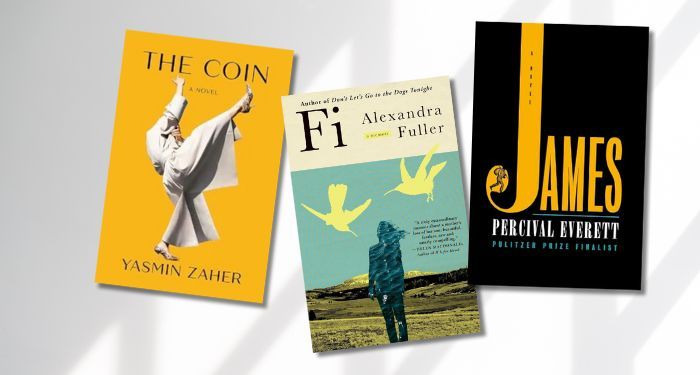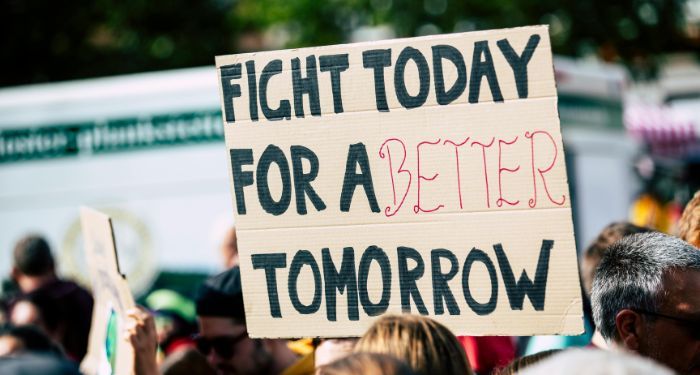 Photo by Dennis Anderson on Unsplash
Photo by Dennis Anderson on Unsplash
Today’s post is by writer, editor, and book coach Jennifer Landau.
According to writer Jessica Ciencin Henriquez, many effective personal essays follow a three-part structure: breaking point, back story, resolution. This format works well for memoir, too. When writing your memoir, you begin at the point when something in your life has shifted and can no longer be ignored. You fill in the backstory—which is not your entire life story—that illuminates the breaking point. Then, you move your reader toward some form of resolution that offers closure, if not always catharsis.
Beginning at the breaking point
Salman Rushdie’s National Book Award-nominated memoir Knife opens with a literal breaking point: The author is stabbed multiple times by an assailant while giving a speech at an outdoor amphitheater about, of all things, how to keep writers safe. Rushdie is nearly killed. Among his injuries: a broken jaw.
At the start of Maggie Smith’s memoir You Could Make This Place Beautiful she is searching through her husband’s briefcase after he returns from a business trip. She finds a postcard addressed to a woman who lives in the town he just returned from. He tells the addressee that he doesn’t know the type of pinecone they picked up on their walk, a pinecone he then brought home to the young son he shares with Smith.
Sloane Crosley begins her memoir Grief Is for People with a one-two punch. Her apartment is burglarized when she is out running errands and, she tells us, exactly a month later her former boss and best friend Russell dies by suicide.
Starting a memoir at the breaking point immediately draws in the reader. In these three examples, many questions spring to mind. Was the attack on Rushdie related to the fatwa that the Ayatollah Khomeini had issued when Rushdie published The Satanic Verses thirty plus years ago? And why was there no security at the amphitheater? What made Smith decide to root through her husband’s briefcase that night? Did they have a fight before he left? Was there previous infidelity? Was Crosley singled out for a burglary or was it just a conveniently open window? And what led to her best friend’s suicide?
We read on, looking for answers.
When considering the breaking point in your own memoir, think back to what led you to write your story in the first place. That’s likely fertile ground. The events don’t have to be as dramatic as an assassination attempt or suicide, of course. But something has to happen that makes the reader wonder what led to this inflection point.
Keeping your backstory on track
Rushdie’s and Crosley’s books are slim volumes, just over and under two hundred pages, respectively. Smith’s memoir comes in at more than 300 pages, but many of those have a single paragraph or even a single line on them. All three write with surgical precision and use backstory solely as a way to serve the forward momentum of their memoirs.
In Knife Rushdie takes us back to the night before the stabbing to show us what he calls “his last innocent evening.” He takes us back to his younger years, too. There is mention of the fatwa for context, but he doesn’t linger there. We get a portrait of his drunk and abusive father, but only to show the reader that this chaotic relationship made it difficult for Rushdie to find stability in his personal life. That is until he meets his fifth wife, Eliza, who will play a major part in Rushdie’s grueling rehab. He is showing us their courtship and the life they built together to show the reader how hard he’s worked to find a sustaining love. And all that he has to lose should he not recover.
Smith uses backstory to show the cracks in the foundation of her home. Her husband, a one-time playwright, is jealous of Smith’s success, especially after the poem that gives her memoir its title goes viral. When Smith calls home from a work-related trip she feels her husband’s anger at her taking time away from her duties as a wife and mother. As she puts it, “I didn’t feel missed as a person. I felt missed as staff.”
Smith is also clear about the details she won’t share. She does not recount the scene of her and her husband telling their children about the divorce, for example. Here she is able to set boundaries for the memoir, while also drawing the reader close. The moment her children find out, she says, “isn’t for you.” We are outside of her story, but also her confidantes.
Crosley gives us a brief description of the ring and amulet that were stolen and an only slightly longer one of the grandmother who passed them down: “abusive and creative about it.” The jewels matter because they are Crosley’s mother’s sole inheritance and because Crosley connects their loss to her friend Russell’s suicide. She fantasizes, even after he’s dead, that he will be the one to recover them.
Crosley goes on to paint a portrait of Russell as a charismatic, but troubled man. He had problems with his partner, with his conduct as a publicist at a major publishing house, with a wider literary scandal, and with a penchant for collecting that turns to hoarding. On the last night Crosley sees Russell alive, he recounts a fight with his partner who told him, “Whatever happens don’t kill yourself.” Unsurprisingly, that conversation haunts the author: “My friend was telling me something and I didn’t listen. For how long had he been telling me?”
When building your backstory, think of the clearest path to the breaking point. You don’t have to be spare, but you don’t want your readers to feel like they’re following you down a series of dead ends. Too many sidetracks and they may lose trust in you as a guiding hand. If you are using the beat sheets method from Save the Cat, you can think of the breaking point as an “all is lost” beat and build out from there.
Reaching for a resolution
Resolutions in memoir are by their very nature artificial because, except in the case of posthumous works, life continues. As Smith moves through the messy dismantling of her marriage, she acknowledges that her healing is a work in progress. She hopes that by the time her memoir is published she will be in “a place of forgiveness.”
Crosley seeks resolution by traveling to Australia to jump off a cliff, a feat she failed to complete a decade earlier. She stops herself at the edge of the cliff each time, a move known as suicide drills. Here she reveals her actual motive for returning: to see something of what her friend Russell saw as he “peered into an abyss.” She takes out half a gold chain, all that remained after the burglary, and throws it over the edge of the cliff. This is where Russell is, she decides, even if she never goes back again. Months later, she finds the other half of the chain behind a bookcase in her apartment. But Russell’s half is still at the bottom of the ocean. Their separation continues.
Rushdie has the tidiest ending. He literally returns to the scene of the crime thirteen months after the attack. He stands outside the jail where his assailant is being held and then goes back to the amphitheater to recreate the scene for his wife. He makes peace with the attack and with his life. “We’re done here,” he tells Eliza. “Let’s go home.”
However you choose to resolve your memoir, make sure that it feels true to the story you’ve been telling rather than tacked on. Readers crave closure, not manipulation. Be clear about where you’ve planted yourself at the end of your memoir’s journey. Are you still in the thick of it? If so, be upfront about that. It’s a tricky stance, but workable, and can make your memoir feel alive on the page. If you’re ten years past the events of the memoir, you’ll likely have more perspective. Just guard against tying everything up in a pretty bow. Even the most joyous endings have echoes of what came before. Find this balance and you’ll be sure to leave your readers satisfied.











 Bengali (Bangladesh) ·
Bengali (Bangladesh) ·  English (United States) ·
English (United States) ·